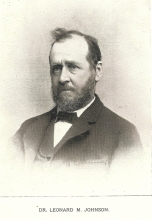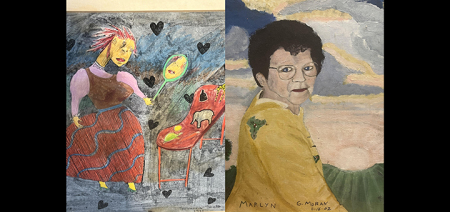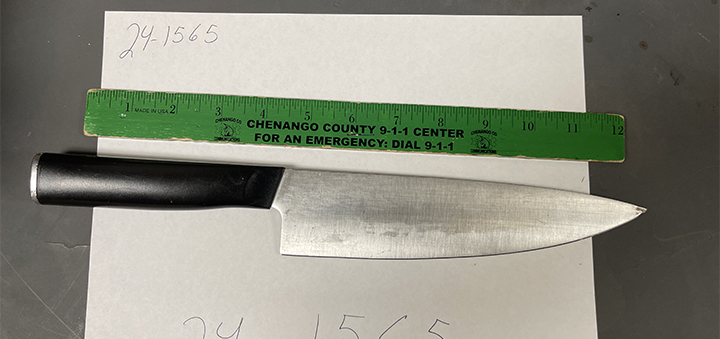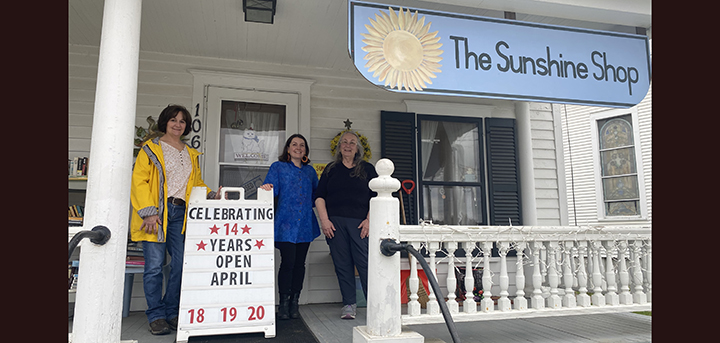Chenango In The Civil War: Dr. Leonard Melancthon Johnson
Published:
July 30th, 2012

Editor’s Note: In conjunction with the Chenango County Civil War Commemoration Project Team, The Evening Sun will present a monthly series chronicling items of local interest during the war between the states, compiled and written by a number of local history enthusiasts.
By Peg Ross
Town of Greene Historian
It was 8:45 in the morning of February 8, 1889. Four boys from 10 to 15 years of age were coasting down Washington Street in Greene when they hit an unexpected train, called a “wild cat.” One of the boys was killed and another had to have his foot amputated by Dr. Leonard M. Johnson, assisted by Dr. George O. Williams and G. D. Johnson. Who was this Dr. Johnson who was the head doctor in this surgery? What was his training that put him in charge?
Leonard Melancthon Johnson was born in LeRaysville, PA, on January 24, 1830, son of Leonard Johnson, originally from Chester, Vermont. His father was a Presbyterian minister who preached in many towns in southern New York State and died in Triangle, NY.
Leonard M. Johnson prepared for college at Delaware Literary Institute, Franklin, NY and subsequently entered Hamilton College. After leaving college, he taught in a private family in Virginia and later in the common schools in Triangle and Union. After a course in the Albany Medical College, from which he was graduated in 1855, he married Adelaide Keeler from Union, NY in 1858 and practiced medicine until the beginning of the war in 1861. On August 18, 1862, he was appointed assistant surgeon in the Third New York Regiment of Infantry, being promoted to the post of surgeon on November 25, 1862. He served at many places including Fortress Monroe where the 114th Regiment, which included many young men from Greene, was stationed for a while.
From September 1864 to January 1865, he was stationed at the Confederate Prison at Elmira in charge of the medical department of the prisoners’ camp. Being compelled by ill health to resign his position he came to Greene where he was in active practice as one of the foremost physicians in Chenango County.
The Elmira Prison Camp was said to be the worst Confederate prison camp in the North – worse than Andersonville, the well-known Union prison of War Camp in the South. No wonder he resigned in ill health after five months.
Elmira was a thriving city in the 1860s with rail lines in all directions of the compass and had become a railroad center for southern and western New York. There was also a Union camp there where all volunteer regiments raised in western New York State and some in the southern part were processed and then sent to the nation’s capital. Indeed, the 114th Regiment of Volunteers from our area left Norwich on the Chenango Canal, transferred to train in Binghamton and went to Elmira where they continued by train ostensibly to Washington, D.C. but instead ended up in Baltimore, Maryland.
When the Civil War was in its third year in the summer of 1864, the camp in Elmira was converted into a prison camp for captured Confederate Soldiers. The Confederates had had heavy losses and more prison camps were needed. It was a 30-acre plot surrounded by a twelve foot wall with a rampart near its top. There was a one-acre lagoon which came to serve as a latrine, dump and garbage dump.
On July 6, 1864, 400 Confederate prisoners of war marched to the camp, becoming the first of 12,123 prisoners held in Elmira. Before long, the camp became overcrowded with 10,000 prisoners by fall. Inadequate housing and the shortage of medical supplies and doctors created ideal conditions for epidemics. A harsh winter of 1864-1865 made conditions worse and then on St. Patrick’s Day the Chemung River flooded filling their tents and barracks with between six inches to two feet of water.
The Confederate soldiers quickly renamed the prison camp “Hellmira” which to this day can be used to mean some horrible situation.
I wrote to the Elmira city historian to see if I could find out anything about Dr. Johnson’s time there. He wrote me that he could find no mention of his name but at the time he was there, the Surgeon General was Major Eugene Sanger and he had five assistants but their names were not known. Some reports say that Dr. Sanger tried to get more supplies and food but the U.S. commissary-general, Col. Hoffman, would not allow it. It was an unfathomable decision as the North had plenty of food and materials available for the prisoners.
On August 18, in retaliation for the conditions in Southern prison camps, Colonel Hoffman ordered the rations for the prisoners to be reduced to bread and water. Disease became rampant. There were 1870 cases of scurvy, followed by an epidemic of diarrhea, then pneumonia and smallpox. By the end of the harshly cold winter, 1264 prisoners had died. When Southern families sent clothes for the prisoners, Hoffman would only allow items that were gray to be distributed. Clothes in other colors were burned while the prisoners literally froze to death. To compound the misery, local residents erected two three-story platforms outside the prison walls. For 15 cents, any person could observe the prisoners.
In an article written by Stephen T. Foster, he stated that the chief surgeon at Elmira was overhead to boast that he had killed more Rebs than any Union soldier.
In April of 1865, after the Army of Northern Virginia commanded by General Robert E. Lee surrendered, the conditions at Hellmira improved. In May, prisoner paroles began and by September of 1865, the camp was vacant.
A total of 12, 122 Confederates were imprisoned at the camp, 2,963 or almost 25 percent had died of disease, overcrowding, starvation or exposure. The sexton for Woodlawn Cemetery in Elmira, John W.Jones, a former slave who arrived by the Underground Railroad, buried each soldier who died at the Elmira Prison Camp. Of the 2,963 soldiers, only seven are listed as unknown.
Elmira: Death Camp of the North by Michael Horigan was written in 2002 and is available for loan through the Four County Library System if you are interested in reading more on the subject.
When Dr. Leonard M. Johnson came to Greene in January, 1865, he practiced medicine for forty-five years until his death in 1910. The skill he acquired held him in good stead. He was highly respected.
The horrors of war are with us still with conditions in prisons and treatment of prisoners being often in the news. Let’s hope that Dr. Johnson found tranquility in Greene and could forget what he had experienced during the Civil War years.
Comments






